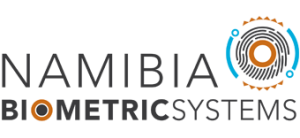Benefits of Electronic Voting
There are an increasing number of countries around the world that have implemented or piloted electronic voting (e-voting) and electronic counting (e-counting) systems. Although each country’s experience is different, the increasing adoption of these new technologies is due in part from the recognition that technology may offer benefits over traditional methods of voting and counting. Some of the benefits of e-voting and e-counting may include:
- E-voting eliminating the cost and logistics involved with paper ballots. The costs of paper ballots must not be undermined. E-voting machines can be used over many elections and therefore the cost is reduced costs significantly if well implemented.
- E-voting can improve voter identification mechanisms compared to manual traditional methods of voter identification. Traditional methods of voter identification are labour intensive. Voting officials are faced with the monotonous task of manually verifying thousands of voters in challenging working environments. It is expected that the error rate in voter identification increases as the officials get tired. E-voting greatly reduces direct human control and influence in this process.
- E-voting can make the conduction of complex elections easy and likely to increase voter turnout if implemented with strict guidelines. Introducing e-voting touches the core of the entire electoral process such as the casting and counting of the votes.
- E-voting eliminating invalid ballots. Paper ballots can result in badly educated voters to cast invalid votes.
- E-voting can result in faster, more accurate and standardized counting of ballots. In most African countries, the counting of thousands of paper votes is conducted by recent grade 12 graduates who lack the experience and skills required for such a vital national project. In addition, the recruitment process tends to lack strict essential security checks. Thus putting the elections at high risk.
- E-voting can results in prevention of certain forms of fraud. Many National elections worldwide have been characterised with missing ballots, impersonation voters (where someone steals a voter’s identity and votes on their behalf), etc. On the other hand, fraud in e-voting systems can only be conducted by qualified individuals. The percentage of qualified individuals likely to conduct fraud in e-voting is much smaller compared to the percentage of both qualified and unqualified individual likely to perform fraud on paper voting. The weaknesses of both voting systems must be fully understood in order to minimize fraud.
It is essential that E-voting is implemented with certain guidelines in order to maximise the election outcomes:
- E-voting must be implemented in a transparent and verifiable manner. Access should be provided for observers in a manner that does not obstruct the electoral process.
- E-voting and e-counting systems must be easy to understand and use. Stakeholders must be involved in the design of the e-voting and e-counting system.
- E-voting and e-counting systems must be certified by a qualified, independent body before their use and periodically thereafter.
- Security measures must be taken to ensure that data cannot be lost in the event of a breakdown, only authorized voters can use the machines, only authorized persons are allowed to access the machines.
- E-voting and e-counting must be auditable so that it is possible to determine whether they operated correctly. It must be possible to conduct a recount votes. Vote recounts must involve accurate monitored manual recounts of votes cast electronically (e.g., with the paper record representing the basis for legal determination of the vote cast).
More information on the implementation of biometrics based solutions can be requested from info@namibiabiometricsystems.com.
